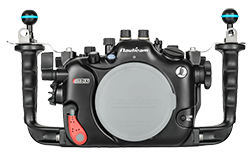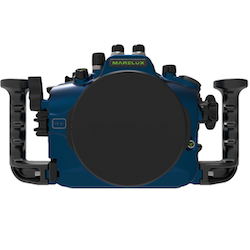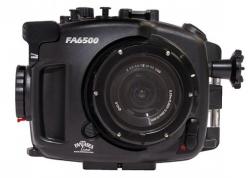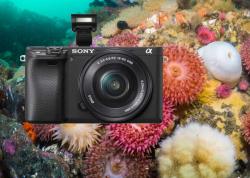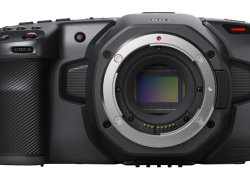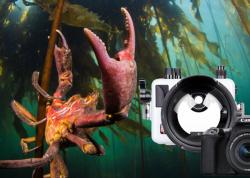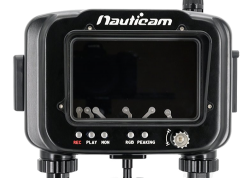Sony A1 Review
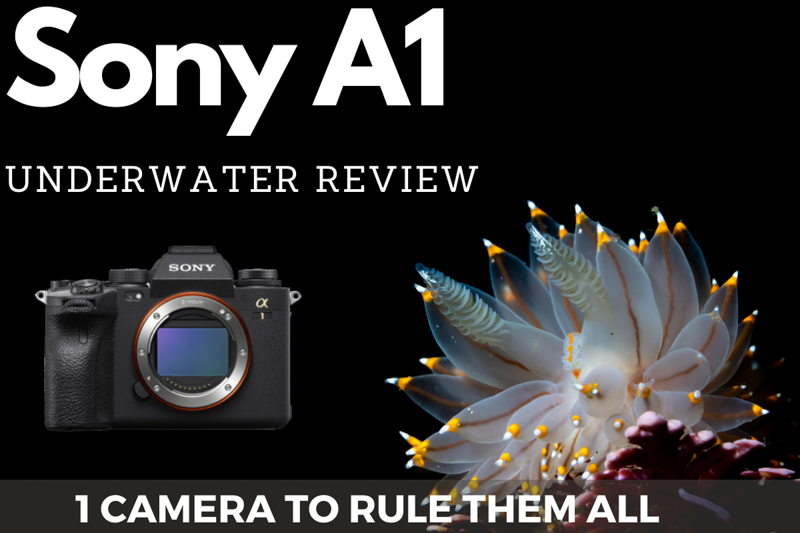
As soon as we got done saying the Canon EOS R5 is the best full-frame camera for underwater photo and video, Sony decided to announce their flagship full-frame camera, the Sony A1. On paper, the Sony A1 is the top hybrid camera for both photo and video with a 50 megapixel stacked CMOS sensor, 30 fps (electronic)/10 fps (mechanical) burst shooting, 30% more autofocus (AF) accuracy than the Sony A9 II, improved animal eye AF tracking, 8K/30p & 4K/120 fps video, 10-bit 4:2:2 internal recording with Sony's full range of log profiles (e.g., Cine, HLG, and S-Log) to choose from, and improved in-body image-stabilization with 5.5 stops of recovery. But generic specs don't mean anything unless the camera performs underwater..... and we are happy to report that the A1 indeed performs!
After weeks of exploring the depths of the Pacific Ocean with the A1 at our side, we are confident in saying the A1 is worthy of its flagship status. But what truly excites us is Sony's innovations in the sensor and shutter technology that sits behind the lens of the camera. Along with reinforcing the mechanical shutter, Sony has changed the game of electronic (silent) shutter technology. With a new Bionz XR processor, the electronic shutter readout is so quick that rolling shutter has been reduced about 1.5 times. This has allowed for the silent shutter to work with external flashes (e.g., strobes) at a sync speed of up to 1/200s - and burst rates up to 30fps. However, this is limited to certain strobes that are using specific TTL converters. The A1 also features a flash sync speed with the mechanical shutter of 1/400s which is a full stop more of flexibility when shooting sun balls, black backgrounds, and any other scenes where it's important to limit available light.
But is all of this bling worth the buck? For $6500.....maybe. A case can be made for the "affordability" of the Canon R5 which stands up to the A1 in many ways. Click here to read our Sony A1 vs Canon R5 comparison. Otherwise, read this full underwater review of the Sony A1 and determine for yourself if the Sony A1 is "1 camera to rule them all."
Sony A1 Body Status: Shipping Now - you can order now at Bluewater Photo!
U.S. MSRP: $6500
Support our content and order a Sony A1 underwater housing at Bluewater Photo:
Nauticam Sony A1Underwater Housing
Ikelite Sony A1 Underwater Housing
Sea & Sea Sony A1 Underwater Housing
Aquatica Sony A1 Underwater Housing
Isotta Sony A1 Underwater Housing
Marelux Sony A1 Underwater Housing
Order a Sony A1 Camera Body at Bluewater Photo:
Check out our full Sony A1 Underwater Housing Buyer's Guide
Jump to a Section
Sony A1 Specifications | Sony A1 Features
Sony A1 for Underwater Photo | Sony A1 for Underwater Video | Who Should Buy?
Best Lenses | Sony A1 Underwater Housings | Conclusion
Sony A1 Underwater Settings | Sony A1 vs Canon R5
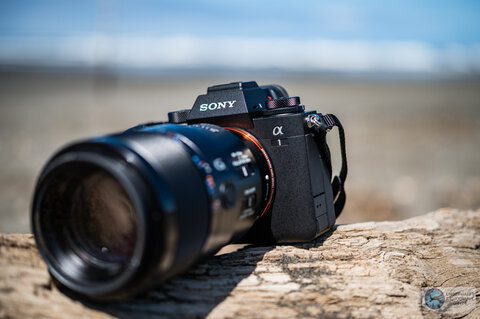
Sony A1 Specifications
- New Full Frame 50MP Exmor RS Stacked CMOS Sensor
- 15 stops of dynamic range with improved colors, tones, and gradation
- New BIONZ XR Processor (introduced in the Sony A7S III)
- Continuous shooting up to 30fps w/ electronic shutter and 10fps w/mechanical shutter at full resolution - AE and AF operable throughout
- Updated Carbon-Fiber Mechanical Shutter for a more quiet and vibration-free performance
- Records video up to 8K/30p (oversampled from 8.6K), 4K/120p (oversampled)
- Improved electronic shutter - greatly reduced rolling shutter and flicker under artificial light
- THE ELECTRONIC SHUTTER WORKS WITH EXTERNAL FLASHES (and strobes)
- FLASH SYNC SPEEDS: up to 1/400sec (mechanical shutter; 1/500 in APS-C mode), 1/200 (electronic)
- Lightning quick AF with its 759 phase-detection points with 425 contrast-detection areas - covering 92% of the sensor
- AF system recalculates 120 times per second - 30% more accurate than A9II
- Better animal eye AF that can track birds - we will be testing to see if it can track fish
- 5 axis IBIS with 5.5 stops of recovery
- New Active steadyshot stabilization (introduced with the Sony A7S III)
- 10-bit 4:2:2 internal recording with 16-bit RAW external recording
- Full range of Log recording options - Cine, HLG, and S-Log
- Viewfinder: Electronic (OLED) - 9.44 million dots
- Dual CFexpress Type A / UHS-II SD Card
- No built-in flash
- Native ISO: 100 - 32,000
- Extended ISO: 50 - 102,400
- Shutter speed: 1/8000 - 30 seconds
- ISO 100 to 32000 (Extended: 50 to 102400)
- Fastest built-in wifi - can transmit video files over 5G
- Sony E Mount
- Dimensions: 5.07 x 3.81 x 2.74 in (128.9 x 96.9 x 69.7 mm)
- Weight: 1.6 lb (737g)
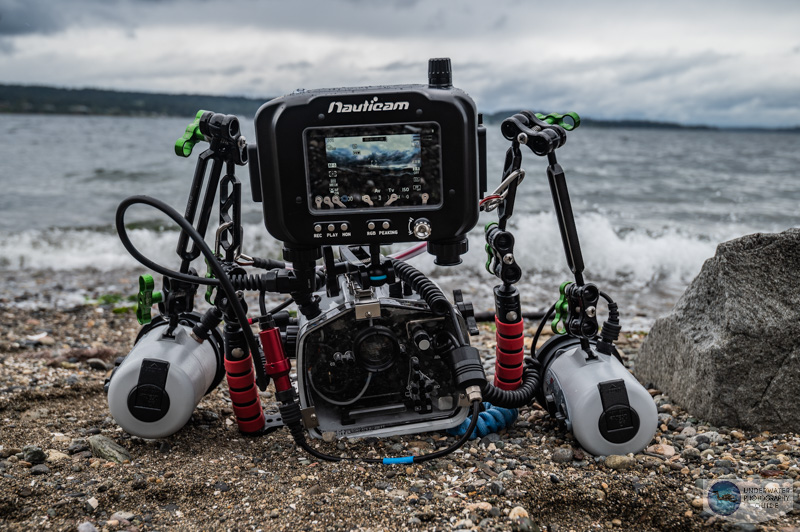
Key Sony A1 Features
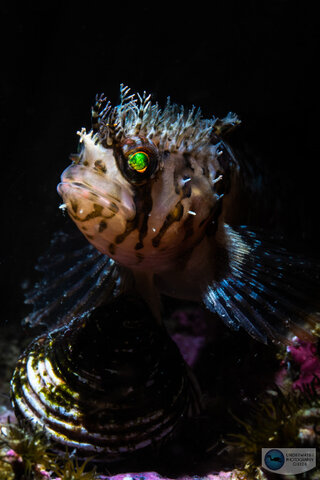
New Sensor, Processor, and Shutter
A new sensor, processor, and shutter introduced in the Sony A1 are what make this camera so exciting. The new 50 megapixel stacked CMOS sensor produces very high resolution photographs and oversampled 8K video (from 8.6K). While the Sony A7R IV boasts the highest resolution of any full-frame camera, due to imperfections in lenses & ports as well as quick-action shooting situations, it is unlikely most underwater creatives will notice a difference in detail between images produced with the two cameras. Less megapixels also makes the A1 a more effective camera for underwater video with much better lowlight performance than the Sony A7R IV. We were astonished with how high we could push the ISO in our video before seeing much degradation (think 12800 and higher). Overall, we think that 50 megapixels of resolution is a real "sweet spot" for underwater photography. It's enough resolution for getting close crops when processing macro photos and still being able to produce nice prints. At the same time, it's not "too much resolution" which can result in noisier images at higher ISOs.
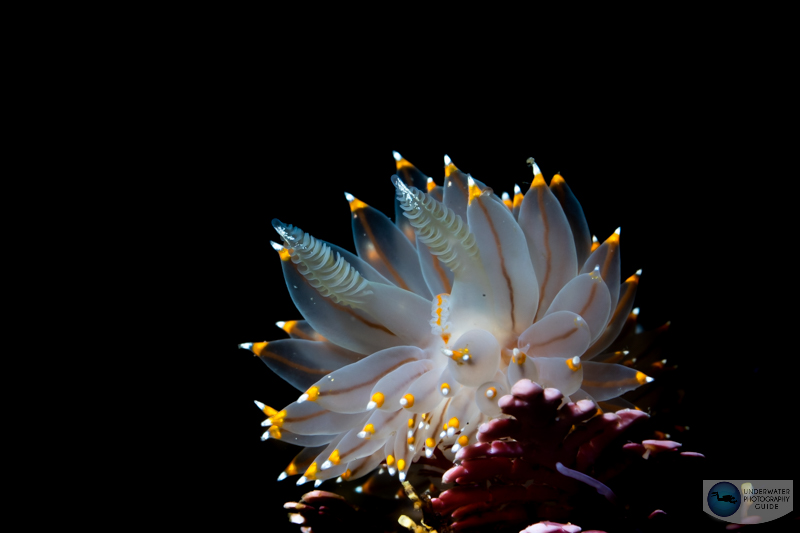
30 fps Burst Shooting
The BIONZ XR processor that was introduced in the Sony A7S III really opened up a doorway for cameras to operate at frame rates that haven't been possible in a camera of this class until now. The Sony A1 can shoot 50 MP photos with full AF/AE capability up to 30fps with the electronic shutter and 10fps with the mechanical shutter. This camera is blazing fast. If you are an ambient light photographer, it'll be almost impossible to miss a frame with the electronic shutter. This is especially true because Sony's dead-on autofocus tracking will be able to refresh as you take photos at the A1's highest burst rates. And even if you do shoot with strobes - at low power, some fast strobes, like the Sea & Sea YS-D3 and the Ikelite DS 161, can almost keep up with the fast burst rates that the A1 can accomplish.
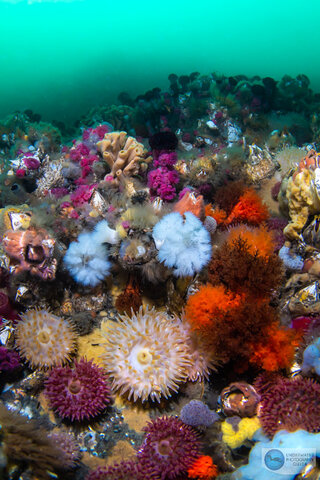
Reduced Rolling Shutter
But what we have been most excited to test underwater are the changes to both the electronic and mechanical shutter. With a stacked sensor and fast processor, the A1 performs an exceptionally quick sensor readout with the electronic shutter. Although it is not yet a true global shutter, Sony is claiming that rolling shutter in the A1 has been reduced 1.5 times! For underwater photographers, this means a fast moving shark won't look warped if captured with the electronic shutter. For underwater video shooters this means you won't see any warpy pans - though we don't recommend you pan that fast underwater.
Strobe Compatibility with the Electronic Shutter
Beyond the implications for underwater video, the silent (i.e., electronic) shutter is now compatible with external flashes, including strobes. As we mentioned this has huge implications for photographers that want to use fast strobes with the electronic burst rate of 30fps. However, it's important to note that you need to use a TTL converter to use external strobes with the A1. A TTL converter will trick the A1 into thinking that you are shooting with a Sony flash. Otherwise, your strobe will not fire with the electronic shutter turned on. Currently, we do not have a full list of compatible TTL converters, but we do know from our dives that Ikelite strobes and TTL converters will work with the A1. In fact, we think that Ikelite's accurate TTL and the A1's fast electronic shutter make ultimate pairing - a faster and more accurate photo system than any on the market. Remember, that you can use Ikelite strobes on any underwater housing with an M14 or M16 bulkhead. Please contact Bluewater Photo to find out if your particular system will work with the A1's electronic shutter.
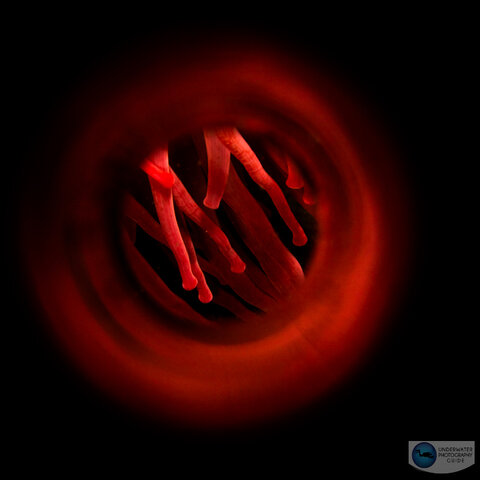
Sync speeds up to 1/400
The mechanical shutter on the Sony A1 has been reinforced, and is also quieter. Moreover, the max strobe sync speed with the mechanical shutter is now 1/400s. That's a full stop less than most cameras in this class can do (e.g., 1/250). For photographers that need to eliminate ambient light while shooting underwater sunballs or black background photos, a higher sync speed will be very useful. With the electronic shutter, the sync speed is 1/200s. When we tested the max mechanical sync speed of 1/400s we had mixed results. Some of our shots had a black bar on one side of the image - indicating that the camera didn't sync properly. Other photos looked perfectly fine. To make sure you don't have any syncing problems at all, we recommend shooting 1/320s. But even if you do have problems snycing at 1/400, the black bar is usually cropable and not that noticeable.
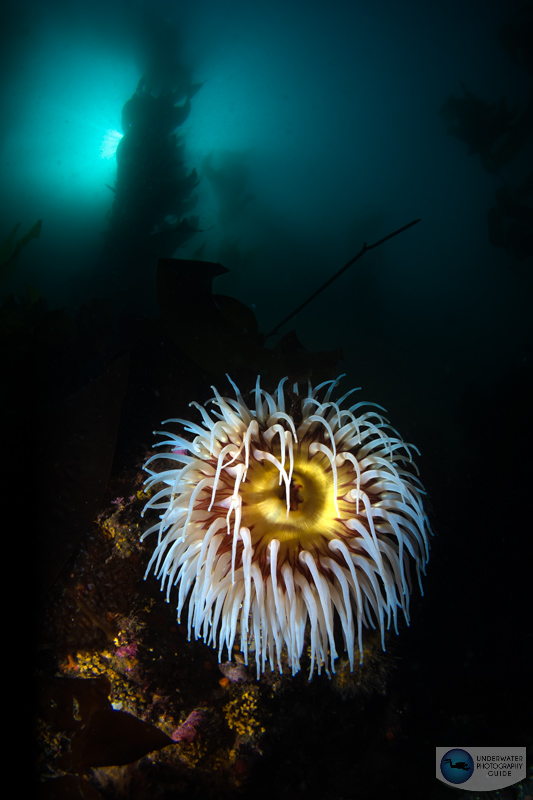
Build, Ergonomics, & Battery Life
For such a remarkable camera, we were surprised when we actually got a body in our hands... it's essentially identical to other Sony full-frame cameras. In fact, the A1 is about the same size as the Sony A7S III with the only difference being an added drive dial. This means that currently all Sony A1 housings also fit the Sony A7S III - though the Nauticam housing needs a conversion kit. Like all Sony cameras, the A1 is solid and weather-sealed to handle tough conditions. The electronic viewfinder is particularly notable as the highest resolution EVF on the market.
For the first time, we have been thoroughly impressed with the ergonomic design of a Sony camera. The wide range of custom buttons (including C1-C4 buttons) make this camera adaptable to any work flow. But more importantly, the menu system has been overhauled to feature an "RGB" style vertical menu. It's extremely easy to navigate and we were able to assign custom buttons in a pinch in strong currents. If you'd like to read more about the A1's ergonomics, check out Bluewater Photo's underwater settings guide.
Finally the battery life....It's disappointing. In fact, it's probably the most negative feature of the A1. We recommend changing the battery after about two dives. The paper rating of the battery is 530 shots, but it didn't always add up underwater. For a single one and a half hour dive, the battery dropped to 23% from fully charged. So make sure you bring extra batteries and be comfortable changing batteries between dive.
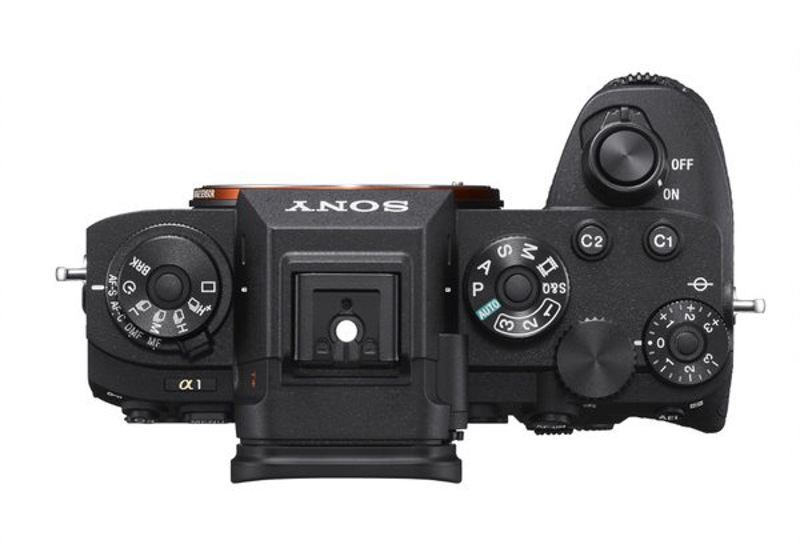
Autofocus
While Sony consistently leads the pack in autofocus performance, the A1 is even more effective than past models - promising 30% more AF accuracy than the Sony A9 II. The autofocus engine can recalculate at 120 times per second which will be ideal for anyone shooting quick action and pelagic photography. Overall, we did notice a slight improvement in the autofocus tracking system and think that it could be just a tad more "sticky" than the Canon EOS R5. We also found that wide AF area mode did a great job of choosing the right subject to focus on - which is rare for most cameras. So at times, we felt comfortable putting the camera in wide mode and letting it pick the AF point.
When we tested the animal eye autofocus tracking system, however, it never located a fish eye underwater. We tried this both in "bird mode" and "animal mode" (cats and dogs). This is disappointing compared to the animal eye AF in the Canon R5 which works reasonably well on fish.
Finally, when we tested the Sony A1 with the Canon 8-15mm fisheye and metabones adapter, the autofocus was quite disappointing. So if you're planning on using a Canon lens and an adapter, you may want to leave the camera in autofocus single mode.
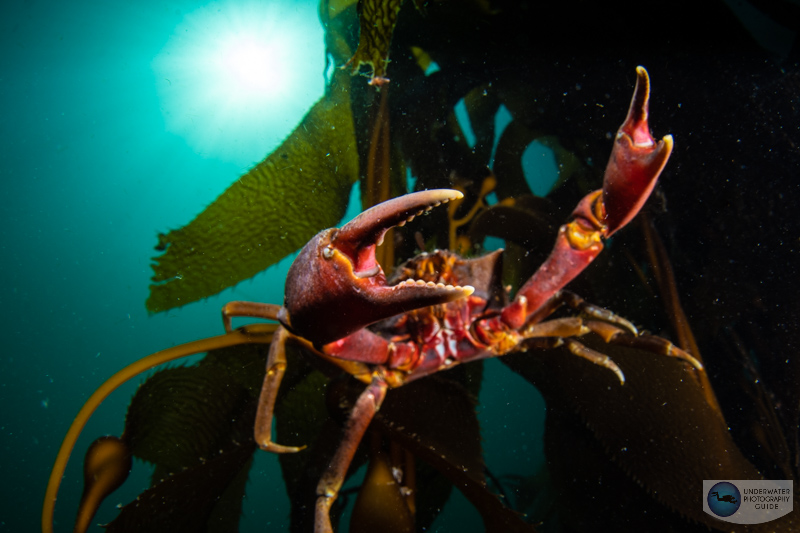
Stabilization
The 5 axis in-body image-stabilization in the Sony A1 is capable of 5.5 stops of correction. This means you should be able to shoot hand held photos with shutter speeds 5.5 stops slower than you could without stabilization. However, it's still not as good as the stabilization system in the Canon EOS R5 and R6 which can recover 8 stops of exposure. We were hoping to see a significant improvement in stabilization on the A1, but were disappointed to see that it was similar to other Sony cameras. It's good and allows you to shoot at lower shutter speeds, but it's not perfect for handheld video. In fact, the Sony A7S III has noticeably better image stabilization than the A1 due to the "active steadyshot" mode which utilizes digital stabilization.
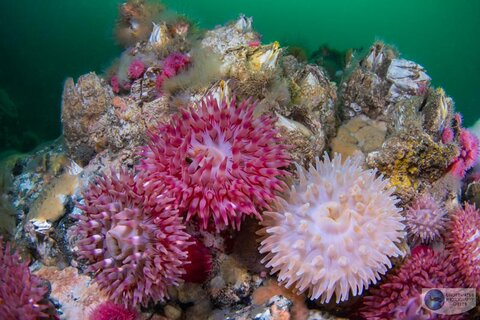
Underwater Photography with the Sony A1
The Sony A1 is a true hybrid camera - it is arguably just as effective for video as it is for photography. But as a photo camera, it is Sony's best. We found the 50 megapixel sensor to be surprisingly effective in low light with very little noise at higher ISOs. It's also a great resolution for macro photographers that want to do a lot of cropping in their post processing. Overall, the dynamic range is better than the Sony A7R IV and we were able to capture a lot of details from the shadows of the image (though less from the highlights).
With burst rates up to 30 frames per second, the Sony A1 should be a top choice for any shark, marine mammal, salmon, or pelagic photographer. It will be difficult to miss any action at that kind of burst speed. That being said, 30 fps is with the electronic shutter and will likely outrun any strobe recycle times - even when the electronic shutter is compatible with strobes through a TTL converter. However, newer strobes like the Sea & Sea YS-D3 will be able to keep up with the camera at lower power. The YS-D3, for example, doesn't have a recycle time below 1/4 power. This will be ideal for cold water photographers and other photographers that may not necessarily need that much light in quick action situations.
When it comes to autofocus tracking - there is no beating the Sony A1. We think this camera currently has the world's best autofocus tracking system. However, it is only slightly stickier than the AF system on the Canon R5. But at this point it would be hard to make the autofocus tracking system any better! When your camera performs as well as the Sony A1 did for us - underwater photography becomes a matter of composition and not "operation."
The updated shutter mechanism on the A1 has the most potential for changing the playing field for underwater photographers. A reduction in rolling shutter is great for anyone shooting in ambient light at an amazing burst rate of 30 frames per second. This will be particularly useful for shark and marine mammal photographers taking photos at the surface. With the right equipment, strobe photography can also be lighting fast and represents the fastest way to shoot underwater photos currently. But perhaps the most exciting attribute to the A1's shutter is the high sync speed of 1/400s. The thought of sunballs in shallow water at this shutter speed is mouth-watering. We were able to really freeze action and capture detail from highlights at this shutter speed.
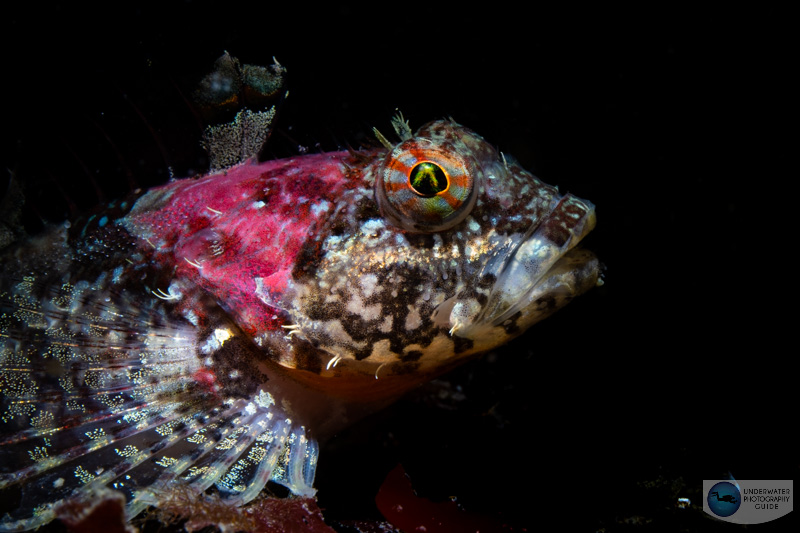
Underwater Video with the Sony A1
Is the Sony A1 be as good as the Sony A7S III for underwater video? Yes and no. For videographers that need 8K - the Sony A1 will be a better option, even than the Canon EOS R5. With a 50 megapixel sensor, 8K video on the A1 is oversampled from 8.6K, resulting in the maximum detail possible. For macro videographers, it is particularly exciting to be able to crop down from 8K significantly and still render a video in 4K or even 6K. However, more resolution tends to result in worse low light performance. The Sony A1 quite as well as the Sony A7S III in low light when it comes to noise, but it does do surprisingly well. So if you plan on only shooting 4K, then we would recommend the Sony A7S III as both cameras can shoot 4K/120p. Good lowlight performance is essential for underwater videography, and the Sony A7S III is particularly amazing on this front as you can see in our underwater video.
The Sony A1 can record 10-bit 4:2:2 internally which is very useful for color grading with the full range of Sony log profiles - including Cine, HLG (hybrid log gamma), and S-Log profiles. However, the A1 cannot record RAW video internally like the Canon EOS R5. That being said, for serious video shooters, the A1 will be able to output 16-bit RAW over HDMI to an external recorder, like the Atomos Ninja V. It's important to note that the A1 "only" samples in 4:2:0 at 8K which makes the 8K footage slightly more limiting from a color grading perspective.
When it comes to video stabilization, the A1 is sufficient for handheld video, even with a macro lens, but not nearly as effective as the Canon EOS R5, Canon EOS R6.
Will the Sony A1 Overheat?
8K and even 4K/120p video tend to bring up the question whether or not the camera will overheat. With a new cooling system that was first introduced in the Sony A7S III, the Sony A1 performs better than the Canon EOS R5 when it comes to overheating. However, we did notice in our dives that the Sony A1 would start to give us a temperature warning after shooting about 20 minutes of video. The camera never overheated and shut off. It is highly unlikely that you will run into overheating issues during a dive with either the Sony A1 or the Canon R5, unless you are shooting at 4K/120p or 8K/30p for a very long time. Please keep in mind that even 20 minutes of 8K video can result in over 300 gb of data!
Who Should Buy the Sony A1?
The Sony A1 body comes in at a spendy $6,500. While this is a lot, it is also in line with other flagship models like the Canon 1DX Mark III and the Nikon D6. The Sony A1 also performs much better than both of these cameras. But the Canon EOS R5 did debut for $3900 with many of the same features. So who should buy the Sony A1?
- Underwater creatives that want the best hybrid system for underwater photo and video on the market
- Current Sony shooters who want to upgrade to the best of the best
- Quick action photographers that want to make use of the 30fps electronic shutter - especially those who focus on ambient light photography (e.g., shark, dolphin, salmon photogra
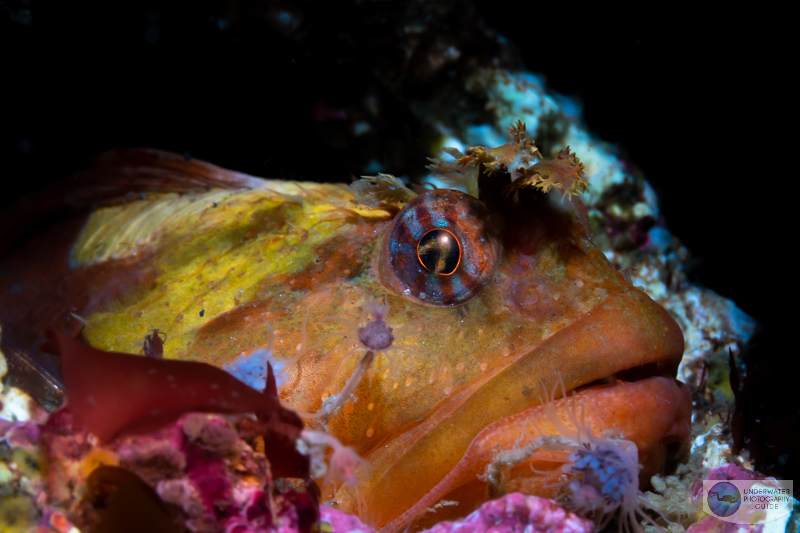 phers)
phers) - Wide angle shooters that love shooting sunballs - especially in shallow water
- Macro shooters that need solid black backgrounds, especially without snoots
- Photographers that need high resolution photographs, especially macro shooters that do tight crops in post
- Anyone who loves quick autofocus
- Videographer that want to shoot 8K video - especially those that want detailed, oversampled video from 8.6K
- Videographers that intend to crop (e.g., macro shooters)
- Videographers that want to make use of Sony's wide range of log options with 10-bit 4:2:2 internal recording
We think that many people will be sufficiently happy with the Canon EOS R5. But if you are still unsure, please contact us!
Underwater Lenses for the Sony A1
In recent years, Sony has gone from having a limited supply of lenses for underwater photography to one of the best repertoire of native lenses for full-frame mirrorless cameras on the market. Sony A1 users have an excellent set of choices for shooting macro, wide, mid-range, and fisheye.
Wide-Angle Lenses
The Sony 16-35mm F4 lens is the top wide-angle lens choice for photo and video. If you’re looking for something even wider to get nice close-focus wide-angle (CFWA) shots of reefs there are a couple of options for shooting fish-eye. The 28mm prime lens with a fisheye conversion lens will give the widest possible angle of view. The fisheye conversion lenscan be used behind a large or small dome port, while the Sony 16-35 mm F4 les is recommended for use with an 8-inch dome or larger.
Wet wide-angle lenses are a great option with this camera. We recommend the Nauticam wet wide-angle lens or the Kraken KRL-01 wet wide-angle lens with the 28mm prime lens. All of these options are very sharp and will result in stunning wide-angle photos.
If you have a Nauticam or Marelux housing, our top recommendation is to pair the Sony 28-60mm kit lens with the Nauticam WWL-1B and Nauticam CMC-2 for the best wide angle and macro combination.
Mid-Range Lenses
The Sony 24-70mm F 4 or the Sony 28-70mm F3.5-F5.6 are good choices along with the 35mm F2.8 portrait lens.
Macro Lenses
For underwater photography, the Sony 90mm macro prime lens is the best choice for small fish and macro subjects. It is exceptionally sharp and produces high quality images. A 50mm macro lens is another great option, though it doesn't focus as quick as the Sony 90mm. Recently, the Sigma 105mm f/2.8 DN DG Art macro lens was reviewed by Bluewater Photo. It looks like it's going be an excellent alternative to the Sony 90mm with potentially better image quality!
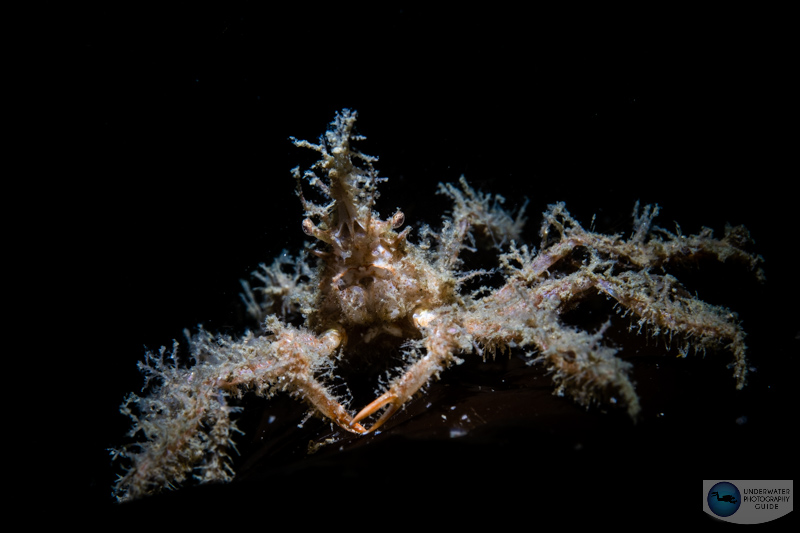
Recommended Topside Sony Lenses
Telephoto
In our opinion, the four best Sony telephoto lenses are the Sony 600mm F4, Sony 100-400mm F4.5-5.6, Sony 200-600mm F5.6-6.3 and the Sony 70-200mm F2.8. These four lenses are Sony's flagship telephoto lenses and will each produce stunning image quality. If you're looking to add to your topside kit bag as well as your underwater one, consider these top-of-the-line options.
Wide-Angle
The Sony 12-24mm F4 FE wide-angle lens is a high-quality zoom lens that's perfect for landscapes, seascapes, interiors and any other time when getting as much in the frame as possible is the goal.
Canon Lenses
Canon lenses can be attached to the Sony A1 with the Metabones, Sigma MC-11, or Photodiox adapters, but auto-focus is generally better with Sony lenses. Lenses like the Canon 8-15mm, 16-35mm, 17-40mm, and 100mm can work well.
We did our review with a Canon 8-15mm fisheye lens and a metabones adapter, behind the Ikelite 8 inch compact dome port for close focus wide angle. Unfortunately, we noticed that the autofocus with this setup is very slow. We only recommend using the Canon 8-15mm if you intend to shoot slow scenes or plan on shooting with manual focus.
Underwater Housings for the Sony A1
Currently there is an anodized aluminum Nauticam Sony A1 underwater housing and a polycarbonate Ikelite Sony A1 underwater housing. Due to the anticipated popularity of the camera, we anticipate a model housing from all major housing manufacturers - including Ikelite, Nauticam, Marelux, Sea & Sea, Aquatica, and Isotta. If you email sales@bluewaterphotostore.com, you can already order a housing in stock or pre-order a housing from your favorite brand!
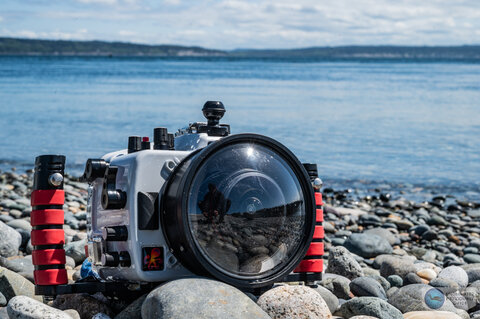
Ikelite Sony A1 & A7S III Underwater Housing
The Ikelite Sony A1 & Sony A7S III Underwater Housing is a top quality, corrosion free ABS-PC blend polycarbonate housing. It's sturdy and lightweight underwater. This housing offers professional ergonomics at an excellent price point. Most notably, the Ikelite A1 and A7S III housing is compatible with Ikelite's incredible TTL system. The back of the housing is clear so you can see everything going on inside of your camera, and it has a built in vacuum valve (pump sold separately) for additional safety. The dry lock port system is compatible with most Sony and Canon lenses adapted with a metabones adapter. We dived with an Ikelite Sony A1 and A7S III housing for both our Sony A1 and Sony A7S III review and loved using it! We put it through some of the highest current and surf we could find and it came out of our cold waters without a scratch.
Nauticam Sony A1 Underwater Housing
The Nauticam Sony A1 Underwater Housing is built from aircraft grade aluminum which makes it durable and lightweight. It has full control over the Sony A1 camera including compatibility with the autofocus joystick, the drive mode dial, and the autofocus mode dial. The patented port locking mechanism makes it very easy to remove and add ports and Nauticam optics like the WACP-1 and WACP-2 - providing you with the option for the best rectilinear wide optics underwater.
Marelux Sony A1 Underwater Housing
This Marelux underwater housing is built from high-grade aluminum alloy which provides durability and can withstand even the toughest beatings. Ergonomics are also top-notch, all camera controls are readily available at your fingertips and all buttons are clearly labeled. Thanks to its small size, it is great to travel with. Assembling the housing itself and installing a camera is a breeze with its quick release plate so you can spend more time under the water and less time setting up your gear. With a depth rating of 100m, this housing is an excellent option for both recreational divers as well as technical divers.
Check out our full Sony A1 Housing Guide
Support our content and order a Sony A1 underwater housing at Bluewater Photo:
Nauticam Sony A1Underwater Housing
Ikelite Sony A1 Underwater Housing
Sea & Sea Sony A1 Underwater Housing
Aquatica Sony A1 Underwater Housing
Isotta Sony A1 Underwater Housing
Marelux Sony A1 Underwater Housing
Order a Sony A1 Camera Body at Bluewater Photo:
Check out our full Sony A1 Underwater Housing Buyer's Guide
Sony A1 Underwater Settings
Conclusions
The Sony A1 is the best full-frame mirrorless camera in a crowded field. But this ultimate photo and video machine comes at a steep price of $6500. Is it worth it? Yes, we think so. The A1 is Sony's flagship model and it doesn't hold back in technological innovation. In particular, the new electronic shutter with lightning quick readouts is going to change the way photographers take photos - for both quick-action and external lighting situations. And beyond that, oversampled 8K video with less potential to overheat than the Canon EOS R5 and Sony's wide range of log shooting options are going to give videographers the ultimate palette. Can you get many of these features with the Canon EOS R5? Yes. For many, the R5 is going to be more than sufficient as a workhorse underwater photo and video camera. But there are always going to be those that need the best of the best. The Sony A1 is made for them.
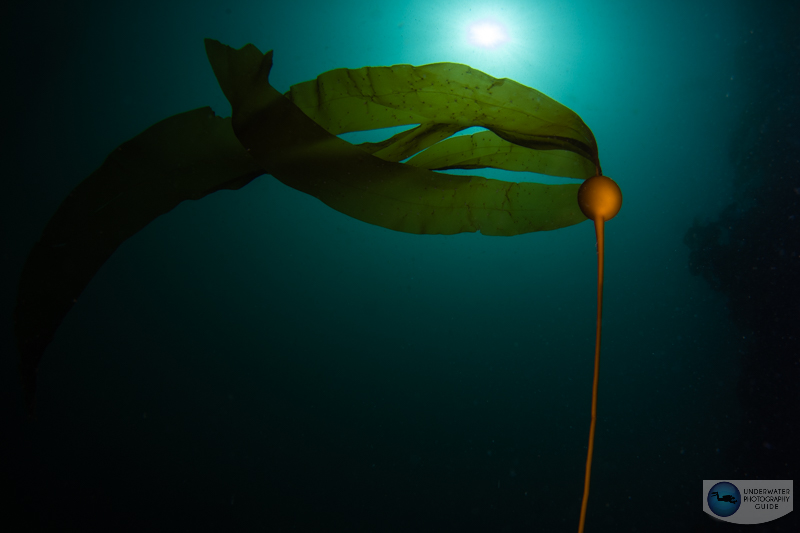
RECOMMENDED ARTICLES
SUPPORT THE UNDERWATER PHOTOGRAPHY GUIDE:
The Best Service & Prices on u/w Photo Gear
 Visit Bluewater Photo & Video for all your underwater photography and video gear. Click, or call the team at (310) 633-5052 for expert advice!
Visit Bluewater Photo & Video for all your underwater photography and video gear. Click, or call the team at (310) 633-5052 for expert advice!
The Best Pricing, Service & Expert Advice to Book your Dive Trips
 Bluewater Travel is your full-service scuba travel agency. Let our expert advisers plan and book your next dive vacation. Run by divers, for divers.
Bluewater Travel is your full-service scuba travel agency. Let our expert advisers plan and book your next dive vacation. Run by divers, for divers.




